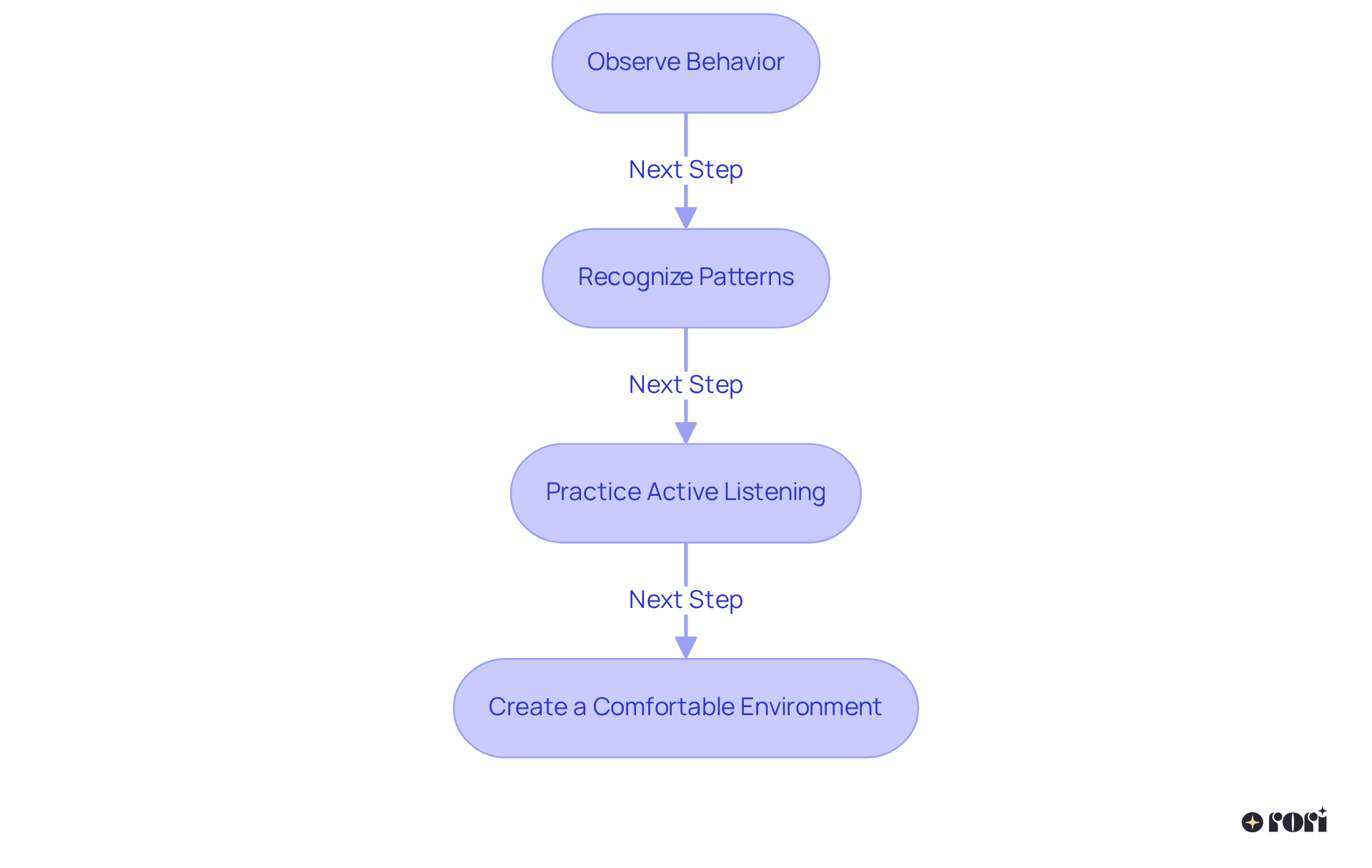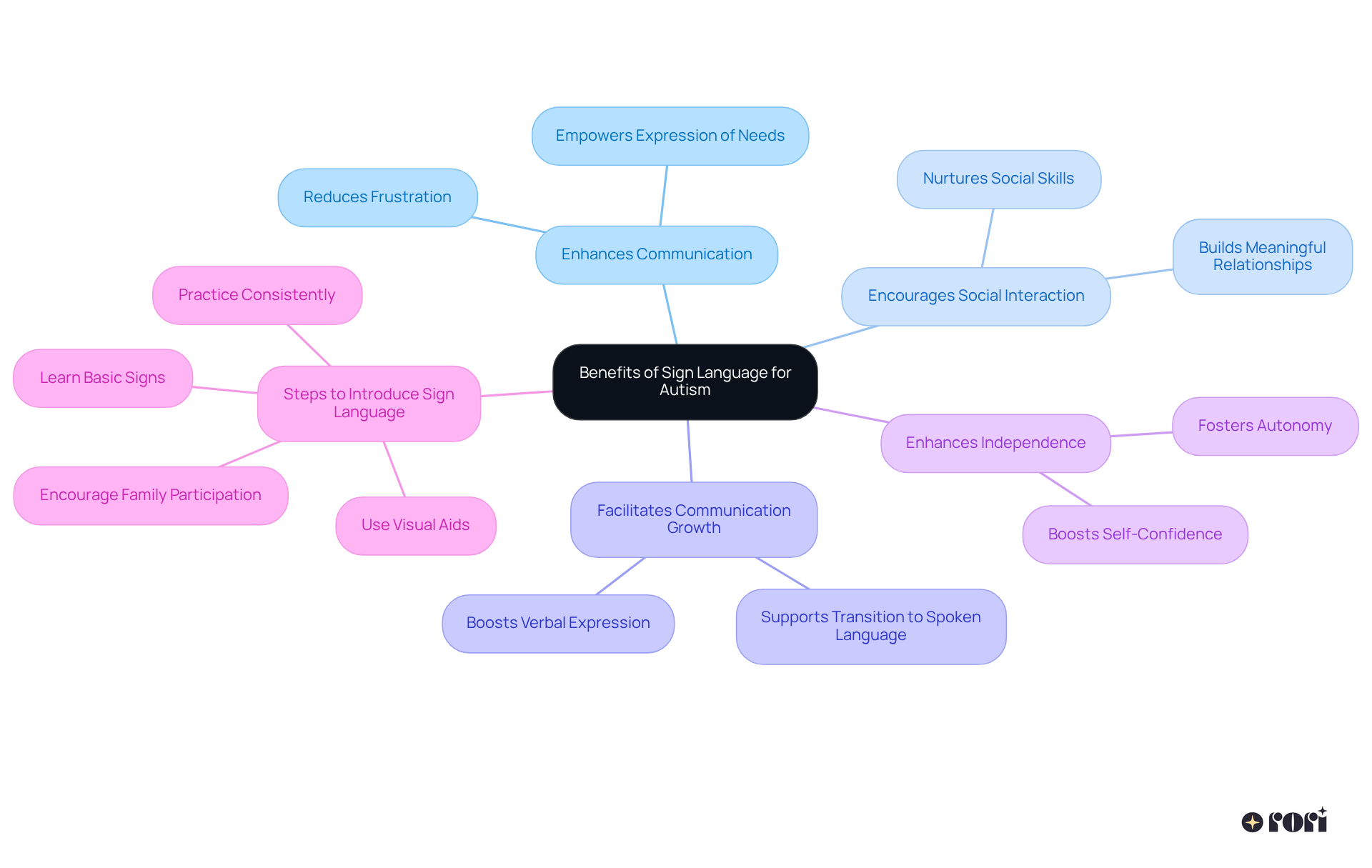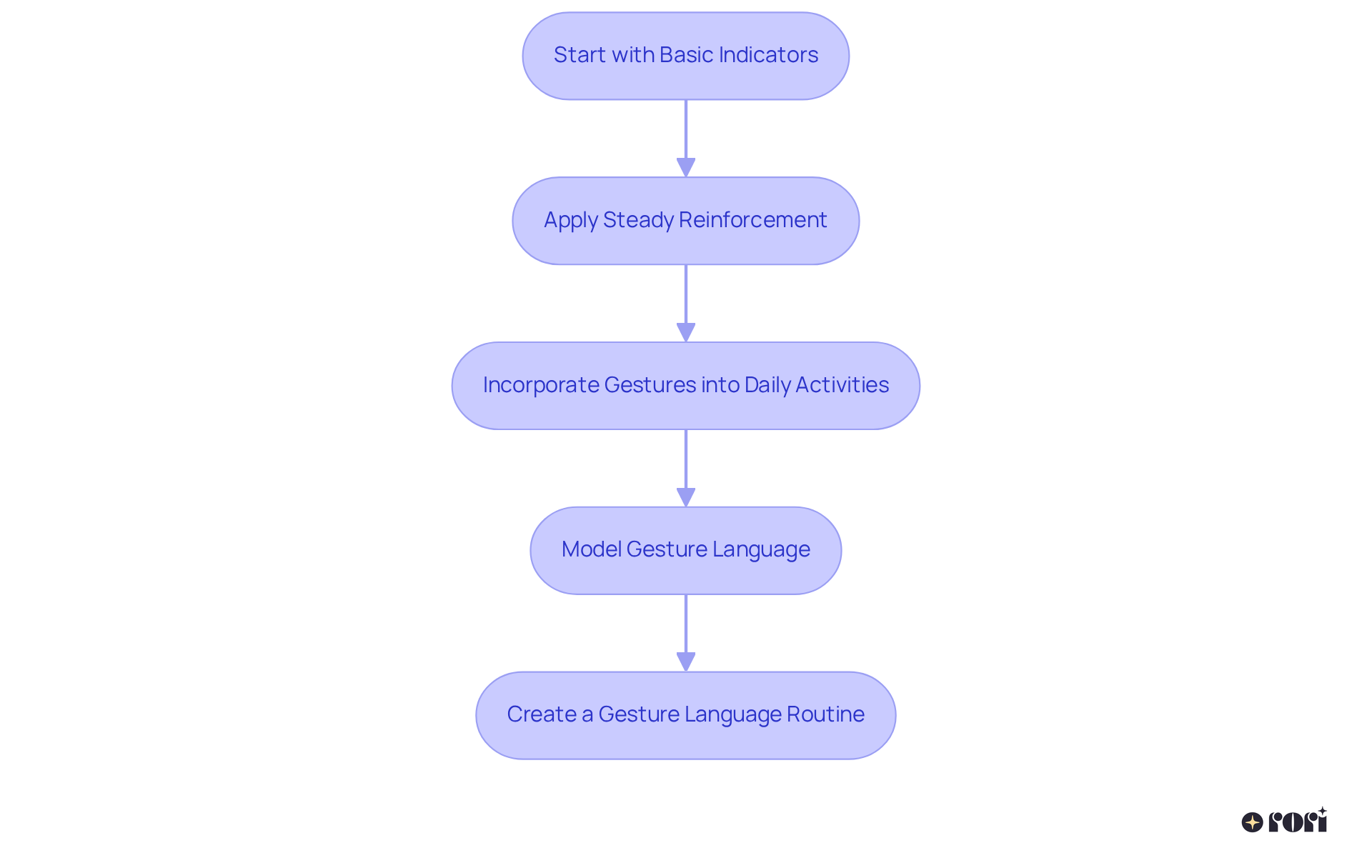This article highlights the importance of mastering non-verbal communication and basic sign language to enhance interaction skills in children with autism. 🌟 Understanding non-verbal cues and incorporating sign language can truly make a difference! It can improve communication, reduce frustration, and foster social connections. Caregivers and educators can benefit from practical strategies that support these efforts.
Imagine a child feeling understood and connected—what a wonderful outcome! By embracing these tools, we can help our little ones express themselves better and build meaningful relationships. Let’s explore this together and see how we can make a positive impact in their lives!
Understanding and navigating the world of non-verbal communication is essential, especially for children with autism. These kids often find it challenging to express their thoughts and feelings through spoken language. By mastering basic sign language and recognizing non-verbal cues, caregivers and educators can unlock a powerful tool that fosters connection and understanding.
But here’s the question: how can we effectively implement these strategies to enhance communication and social interactions? Let’s explore this together! This journey delves into the transformative impact of sign language for autism, revealing methods to bridge communication gaps and empower children on the spectrum. We’re here to help you every step of the way!
Non-verbal interaction includes a variety of behaviors, like facial expressions, gestures, body language, and eye contact. For children with autism, these methods are crucial. They may find it challenging to express their thoughts and feelings verbally. Understanding and responding to non-verbal communication and basic sign language for autism can significantly enhance their interaction skills and social engagements.
To effectively grasp non-verbal communication in autism, consider these strategies:
By mastering these aspects of non-verbal communication, including basic sign language for autism, caregivers and educators can create a more supportive and understanding atmosphere for individuals with autism. This ultimately enhances their social skills and emotional well-being. Let’s explore this together!

For youngsters with autism, non verbal communication basic sign language for autism is an essential tool that provides a visual and tactile way to interact, bridging the gap when verbal abilities are limited. Let’s dive into some key benefits of incorporating sign language into your communication strategy:
To effectively introduce sign language, consider these steps:
By exploring and applying non verbal communication basic sign language for autism, caregivers can greatly enhance interaction and bonding with youth on the autism spectrum, ultimately improving their quality of life. Plus, this approach equips caregivers with the knowledge and skills to support their children's behavioral goals through active involvement and understanding of ABA principles. Let’s explore this together!

To effectively implement basic sign language techniques, let’s follow these friendly steps:
Start with Basic Indicators: Begin with a few essential symbols that are part of your little one’s daily routine. Think of simple indicators like 'hello,' 'thank you,' 'more,' and 'finished.' Starting with these basics helps kids understand the essentials of communication.
Apply Steady Reinforcement: Whenever your child uses a gesture, be sure to support their effort with some encouraging feedback. This could be as simple as verbal praise or a small reward, motivating them to keep using sign language. Research shows that consistent reinforcement strategies, a key principle of Applied Behavior Analysis (ABA), significantly boost learning outcomes for autistic children. This approach not only nurtures communication but also helps reduce frustration, creating a more positive atmosphere.
Incorporate Gestures into Daily Activities: Use hand communication during everyday routines, like mealtime or playtime. For instance, when offering food, use the gesture for 'more' to inspire your child to express their needs. This practical application helps children grasp the importance of symbols in their daily lives and aligns with the ABA approach of making learning meaningful.
Model Gesture Language: Demonstrate gestures regularly in context. Kids learn by watching, so incorporating symbols in your interactions will help them comprehend and remember. Engaging with gestures in various situations strengthens understanding and memory, enabling you to support your child's behavioral goals effectively.
Create a Gesture Language Routine: Establish a routine that includes gesture language practice. Set aside a specific time each day for learning new gestures or refining existing ones. Consistency is key; studies show that routines help kids thrive by providing predictability and stability. Family involvement is crucial here, ensuring that your child is exposed to gestures in different contexts, aiding their understanding and encouraging informed choices in their growth.
By applying these methods, you can create a vibrant learning environment that encourages kids to use gestures as a form of communication. This not only reduces frustration but also enhances their overall quality of life. Understanding the benefits of non verbal communication basic sign language for autism can significantly improve the ability of autistic individuals to communicate and interact with the world around them. So, let’s explore this together and reinforce the importance of caregiver education in supporting child development through ABA!

Mastering non-verbal communication, especially through basic sign language, is so important for creating meaningful interactions with children on the autism spectrum. This approach not only helps them express their needs and emotions but also builds a bridge for social engagement, ultimately leading to a better quality of life.
Key strategies to consider include:
Incorporating sign language can be a powerful tool that empowers children to communicate effectively, encourages social skills, and promotes independence. Regular practice and family involvement are essential for reinforcing these skills, ensuring that children feel confident in expressing themselves.
In conclusion, embracing non-verbal communication techniques and basic sign language for autism is not just an educational journey; it’s a transformative experience that can greatly enrich the lives of both children and caregivers. By prioritizing these methods, caregivers can cultivate an environment of understanding and support, enabling children to thrive and connect with the world around them. Taking these steps can lead to profound changes in communication dynamics and emotional well-being. Let’s explore this together and make a difference in their lives!
What is non-verbal communication in autism?
Non-verbal communication in autism includes behaviors such as facial expressions, gestures, body language, and eye contact, which are essential for children with autism who may struggle to express their thoughts and feelings verbally.
Why is understanding non-verbal communication important for children with autism?
Understanding non-verbal communication is crucial because it can significantly enhance interaction skills and social engagements for children with autism, helping them express their needs and emotions more effectively.
What strategies can be used to understand non-verbal communication in autism?
Key strategies include observing behavior, recognizing patterns in gestures and expressions, practicing active listening, and creating a comfortable environment for the child.
How can I observe my child's non-verbal communication?
Pay close attention to how your child uses gestures and expressions, such as pointing to items they want or smiling when they are happy.
What should I look for when recognizing patterns in my child's behavior?
Look for consistent behaviors that indicate specific emotions or needs, such as covering their ears when feeling overwhelmed, which may signal discomfort.
What does practicing active listening involve?
Practicing active listening involves engaging with your child by responding to their non-verbal cues, such as mirroring their gestures or acknowledging their expressions to show understanding and support.
How can I create a comfortable environment for my child?
Ensure that your child feels safe and relaxed in their surroundings, as this encourages them to express themselves more freely through non-verbal means.
How does mastering non-verbal communication benefit caregivers and educators?
By mastering non-verbal communication, caregivers and educators can create a more supportive and understanding atmosphere for individuals with autism, ultimately enhancing their social skills and emotional well-being.